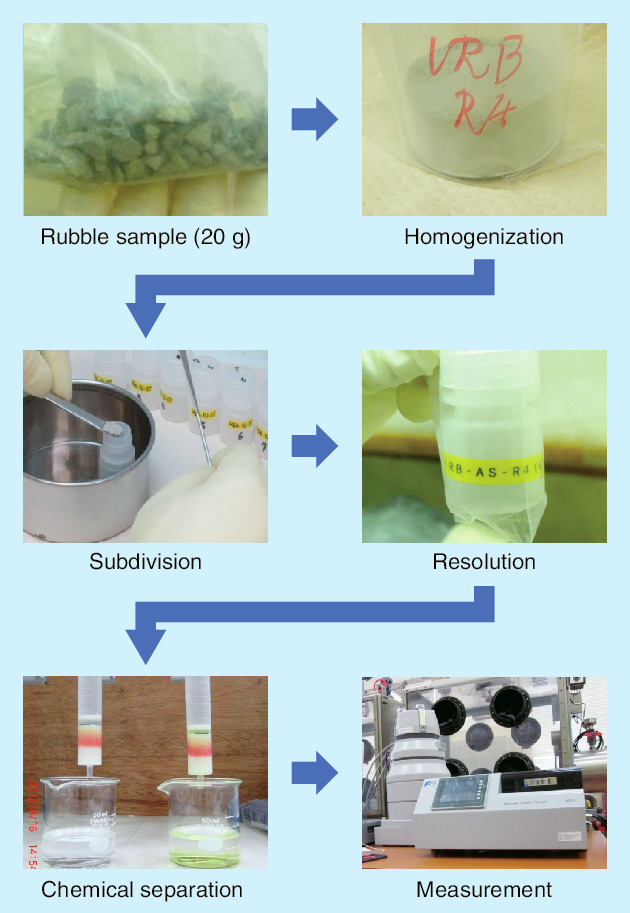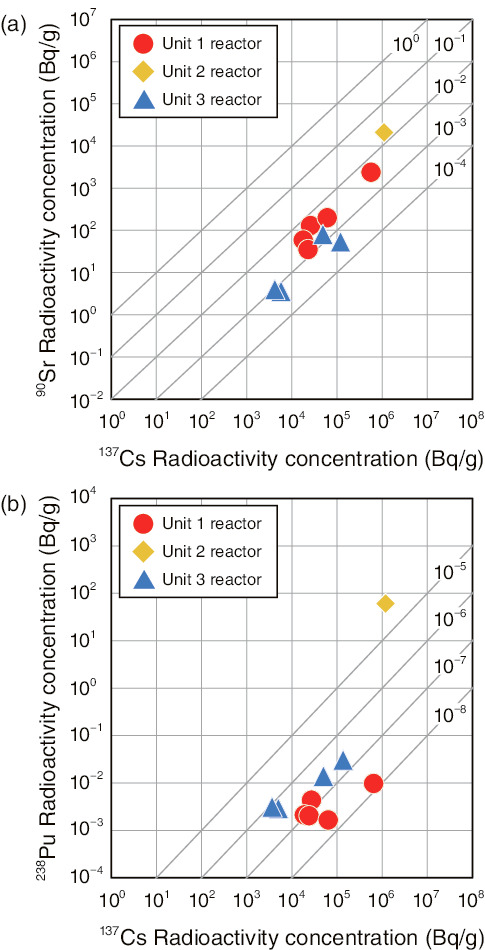
Fig.1-19 Flow of radiochemical-analysis operation

Fig.1-20 Measured radioactivity-concentration results
For the decommissioning of the TEPCO’s Fukushima Daiichi NPS (1F), the establishment of disposal policies for the waste (including rubble) that will be generated is an urgent task. To accelerate waste treatment and subsequent disposal, it is first important to clarify information such as the radionuclide and radioactivity concentrations of waste generated by the accident. Therefore, we conducted radiochemical analysis of rubble collected in the reactor buildings (Fig.1-19).
Fig.1-20 shows an example of the nuclides detected among the acquired data for radioactivity concentration. The 90Sr concentration tended to be proportional to that of 137Cs with a correlation coefficient of 0.89. Thus, there is a possibility of estimating 90Sr concentration, which is difficult to directly measure, based on radioactivity from 137Cs (which is easy to measure). On the contrary, it was not clear that the 238Pu concentration was proportional to the 137Cs concentration with a correlation coefficient of 0.51, and further accumulation of radioactivity-concentration data is necessary.
The 90Sr/137Cs ratio of Units 1, 2, and 3 obtained by radiochemical analysis were (3.2 ± 1.5) × 10-3, 1.9 × 10-2, and (8.1 ± 4.6) × 10-4, respectively. These values were 1 to 3 orders of magnitude smaller than the 90Sr/137Cs ratio in fuel in the nuclear reactor calculated by computer code (ORIGEN2). The analytically obtained 238Pu/137Cs ratios of Units 1, 2, and 3 were (6.0 ± 6.4) × 10-8, 5.5 × 10-5, and (3.9 ± 1.9) × 10-7, respectively. These values were 3 to 6 orders of magnitude smaller than the 238Pu/137Cs ratio calculated by the computer code. Therefore, the extent of transport from fuel to the reactor building is suggested to occur in the order 238Pu < 90Sr < 137Cs.
Results obtained by radiochemical analysis are expected to be used not only for estimating the amount of radioactivity inside the reactor building, but also to evaluate the radiation exposure to workers and the environment. We will continue to analyze radioactive waste from 1F and accumulate radioactivity-concentration data for treatment and subsequent disposal.
This achievement was supported by the Subsidy Project of Decommissioning and Contaminated Water Management by the Agency for Natural Resources and Energy, Ministry of Economy, Trade and Industry, Japan (METI).